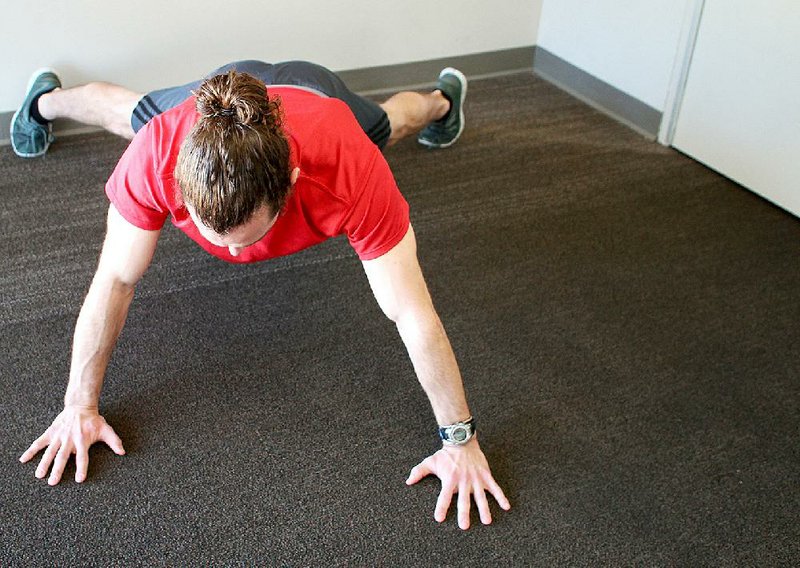Body weight training has become more popular in recent years, in part because it travels better than standard gym weight training.
The only weight you need access to is your own body.
This week, I'll discuss some ways to work out on the go by using body weight training to your benefit. In addition, I'll introduce an exercise that combines core stability, muscular endurance and cardiovascular work into one continuous movement.
No one wants to feel restricted to indoor exercise year-round, especially in a state as beautiful as Arkansas. Given a plethora of scenic parks and recreation resources, it makes sense to have a mobile workout option.
You could sit down and figure out how to modify your existing routine, but don't do that. Instead, start from scratch to create the best possible workout you can.
Take a time-based approach. The first step is to decide how much time you have available and then divide that time to cover three of the major fitness components: flexibility, cardiovascular endurance and muscular endurance.
How much time you allot to each will depend on your specific goals, but typically I prescribe something along the lines of 10/30/20 -- 10 minutes for flexibility, 30 for cardiovascular exercise, 20 for muscular endurance training, in that order. This gives the exerciser an hour of exercise that's balanced according to recommendations in each area.
Next, select some exercises that fit your skill set, goals and fitness level. Flexibility training can involve simply stretching for five minutes before and after your workout, which isn't too tough to grasp.
Cardiovascular training is nearly 100 percent a mobile activity and can range from walking to mountain climbing, with many ambulatory options in between. Assuming your heart rate is in the target zone of 65 percent to 75 percent of your maximum, the mode of exercise is really just preference.
The real trick to developing mobile workouts is the strength training section. Select body-weight exercises that can be done without any equipment. I usually stick to six basic movements: pushups, squats, lunges, stepups, triceps dips and planks. Nearly all body parts are addressed with these six exercises, and they are appropriate for a wide range of fitness levels.
Once this mobile workout has been performed for a few weeks, variety will need to be introduced. Find a replacement for each exercise that still addresses the same or similar muscle groups, but in a slightly different way.
This week's exercise is a great example of a replacement for the plank. The Lateral Crab Walk will challenge not only the abdominals, but also upper body strength.
1. Get into the "up" phase of a pushup and spread your arms and feet apart another 6 to 10 inches beyond your normal pushup position. Your legs should make a V and so should your arms.
2. Move the left hand and left foot to the right so they are close to your body's midline.
3. Hold the left hand and left foot in place while moving the right hand and right foot farther to the right until your arms and legs are back in the "V" configuration.
4. Repeat this pattern for 10 walks, then walk back the other direction.
Grassy places are great for this movement because the hands need a soft surface to shuffle on. On nice days, challenge yourself to perform these until failure and see how far you can go. You may surprise yourself.
Matt Parrott has a doctorate in education (sport studies) and a master's in kinesiology and is certified by the American College of Sports Medicine.
vballtop@aol.com
ActiveStyle on 03/02/2015
